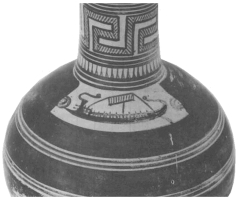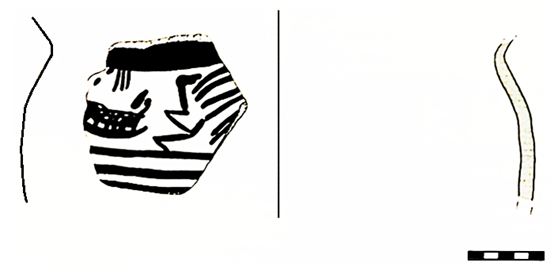Ship to the right with a rockered keel and a lightly outward-leaning vertical stempost terminating in an incurving club-shaped terminal. The keel extends into an upward-curving bow projection. The three horizontal lines above the keel are the gunwale and a double rail respectively. The reading of the latter as a rail is supported by the fact the uppermost line extends beyond the stempost. The vertical lines between the keel and the gunwale represent the frames of the hull, while those above the gunwale are stanchions for the rails. The frames outline at least six "rooms" for the rowers. Given the curvature of the keel it is likely that the hull extended further to the left for about 2 cm, bringing the total number of rooms to 10, and thus amounting to a twenty-oared ship (eikosoros).1 The black square above the gunwale represents a non-integrated forecastle. The solid field on the left edge of the sherd and the additional line above it are hard to interpret.
1. This size is popular in the Homeric epics: Od. I.280, II.212, IV.669-672, IX.322-323; Il. I.308-311.




